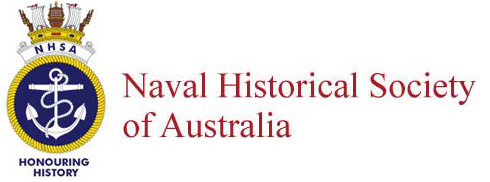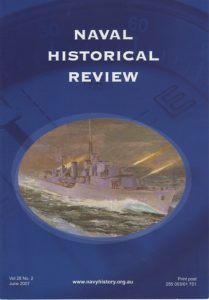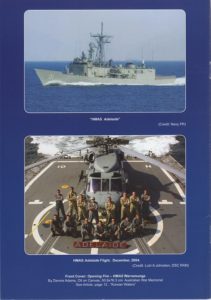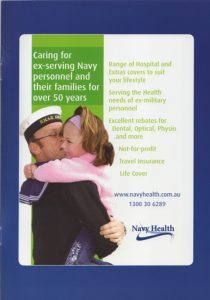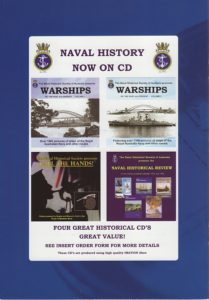- Author
- Doyle, Ron, Leading Seaman
- Subjects
- Ship histories and stories, WWII operations, History - WW2
- Tags
-
- RAN Ships
- None noted.
- Publication
- December 2004 edition of the Naval Historical Review (all rights reserved)
When Action Stations was sounded the hangar armourers were frantically changing the aircraft bomb racks for torpedo racks. A heavy shell came through the flight deck into the hangar and set the stowed Hurricanes on fire. This also put an end to efforts to fly off two Swordfish aircraft which had been brought up on deck after Action Stations. ((The War at Sea, by Julian Thompson. Imperial War Museum, 1997)) Firefighting and damage control countermeasures included turning on the hangar sprays and lowering the fire curtain, to contain the initial fire raging in the upper hangar forward. After a short lull in the German firing, caused by the destroyers’ smoke screen, Glorious was hit again, the bridge wrecked and the Captain killed. Command devolved on the Commander, who later ordered ‘Abandon Ship’, and she sank within two hours of the start of the action.
Leaving the ship was carried out almost routinely, the men calm and collected, without panic. Those who could lashed themselves to the overloaded, open Carley floats (liferafts), replacing men who died from wounds or exposure in the icy water. The secrecy involved in the evacuation from Norway included keeping Coastal Command uninformed, so that no additional RAF reconnaissance patrols had been flown, which might have detected the German units at sea and assisted in finding the survivors. Two survivors from the destroyer HMS Acasta were rescued by a German seaplane and taken to Norway. The remainder were picked up nearly 4 days later by a Norwegian fishing vessel and landed in Thorshavn (Faeroes) then taken by British destroyer (HMS Veteran) to Scotland, for intensive and prolonged medical attention.
This was almost the greatest single tragedy and heaviest loss of life suffered by the Royal Navy in a single action throughout WW2.
Bibliography:
- Carrier Glorious by John Winton
- The Inglorious End of the Glorious – the release of the findings of the Board of Enquiry into the loss of HMS Glorious. Article by James Levy in The Mariner’s Mirror Vol 86 No. 3 Aug 2000 (UK) – the Journal of the Society for Nautical Research.
- Ron Dowle’s letter to the Editor October 2004
- Britain’s Wonderful Fighting Forces – Oldhams Press 1940 (photo of flightdeck lift)
- Victory at Sea – P K Kemp – Frederick Muller Ltd 1957 (Destroyer action)
- The Loss of HMS Glorious by Captain V.W. Howland, RCN (Rtd) – International Research Organisation 2000 (www.warship.org/No11994.htm)
